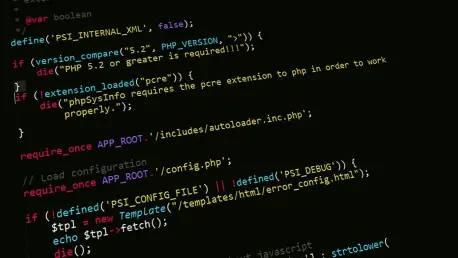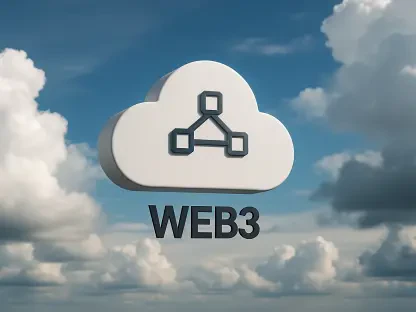The technological realm is undergoing a subtle yet profound transition driven by AI advancements, fundamentally altering the landscape of software development and influencing workforce dynamics within major tech firms. Once seen as merely ancillary to human programmers, AI’s evolving capability now significantly reshapes the industry by potentially making a large segment of the workforce obsolete. With giants like Microsoft and Google recalibrating their operational strategies to prioritize AI-driven processes, the implications for development efficiency and human employment are vast and multifaceted.
Productivity and Initial Optimism
Unveiling AI as an Efficiency Catalyst
AI tools initially captured the tech world’s attention as revolutionary assets, particularly during the generative AI surge, promising to alleviate the tedium of repetitive coding tasks. Software development corridors echoed with optimism, heralding these tools as pivotal to accelerating project timelines and boosting productivity. Companies like GitHub reported notable improvements in work efficiency, anticipating a lessened workload for developers who could now offload rote tasks to machines. Early user feedback detailed significant time savings, propelling software innovation forward and fostering an environment where the quality of AI-generated code was increasingly trusted. A study conducted by GitHub highlighted a substantial transformation in development practices, with 90% of US respondents noting improvements when deploying AI in their workflows. Such promising statistics underscored AI’s potential to redefine traditional coding paradigms.
Reality Check and Workforce Reductions
Despite widespread excitement, the rapid adoption of AI across software development heralded an unexpected consequence: substantial workforce reductions. As AI technologies seamlessly integrated into coding processes, they began to assume roles previously held by human workers, pressing tech companies to reevaluate their human resource needs. Microsoft emerged as a notable example of this shift, with layoffs hitting software engineers particularly hard as a consequence of AI handling major coding tasks. Similar patterns emerged at Google, where a large fraction of internal projects increasingly relied on AI-generated code, diminishing the need for expansive teams of human developers. While AI’s ascension undoubtedly enhanced operational efficiency, this transition catalyzed existential uncertainties among developers regarding their future roles, as firms moved toward leaner structures with AI at the helm.
Industry-Wide Transformations
Beyond Microsoft and Google
The pivot toward AI-centric operations isn’t limited to Microsoft or Google. Across the industry, leaders such as Salesforce and Meta mirror this trend, openly considering a reduced dependence on human engineers. With AI’s emergence as a powerful tool for automating complex tasks, industry-wide consensus grows regarding the need for recalibration of workforce needs. This fundamental shift nudges tech firms toward a reality where maintaining vast software engineering teams is no longer seen as strategically viable. Consequently, many developers confront a shift from hands-on coding roles to positions focused on supervising AI outputs and ensuring system security and reliability. The ethos of workforce restructuring spreads beyond specific entities, reshaping the overall perception of human contribution to tech innovation. As automation gains traction, preserving the human element in creative and supervisory capacities has become a critical consideration.
Upskilling as a Strategic Response
Amid this changing landscape, a focus on upskilling emerges as a beacon of hope, promising a viable path to adaptability for the current workforce. Reports from Gartner suggest that developers who adjust their skill sets in alignment with AI’s capabilities are more likely to thrive amid these transformative shifts. However, this solution demands substantial reeducation efforts; estimates indicate that up to 80% of the workforce may require new training by 2027, highlighting the scale of the challenge. Despite the daunting nature of this transition, enterprises like Microsoft and Google recognize the urgency, with initiatives underway to equip employees with skills enabling effective collaboration with AI systems. The emphasis on retraining and readiness reflects not only the complexity of implementing such programs but also the immense potential for human professionals to remain integral in an AI-driven industry.
The Expanding Consensus and Strategic Communication
Automation and Its Impact on Workforce Realignment
The strategic deployment of AI across tech firms represents a calculated effort not solely aimed at efficiency gains but also at reducing overhead costs through significant workforce reductions. Automation ushers in streamlined operations, permitting companies to shift resources toward high-growth sectors without the encumbrance of excessive human redundancies. Nevertheless, the transition raises essential discussions regarding the nuanced dynamics between automated systems and human labor. While AI takes on large segments of coding responsibilities, human involvement remains indispensable—particularly in quality assurance and overseeing the execution of complex tasks. This balance underscores the continuing necessity for skilled professionals to oversee AI-generated outputs, ensuring that results adhere to established standards. Consequently, while the workforce is realigned, human expertise sustains its relevance in maintaining operational integrity and innovation.
Framing Workforce Reductions as Strategic Moves
Tech giants tactfully articulate their evolution toward AI as strategic realignments, often framing workforce reductions within contexts of resource optimization. This strategic positioning presents the realignment as a pivot toward investment in high-growth sectors while minimizing implications of job losses. Consequently, firms communicate these transitions as opportunities for advancement rather than mere cutbacks, a narrative reflecting philosophical shifts in workforce engagement. The communication strategy effectively masks a deeper discourse on the transformation of human capital utilization, subtly implying that AI increasingly assumes domains traditionally dominated by humans. This strategic narrative fosters a collective openness to embracing AI innovations while proactively engaging employees in the broader context of technological evolution.
Conclusion: Navigating the AI Revolution
The tech industry is experiencing a significant, though understated, transformation spurred by advancements in artificial intelligence. This shift is not merely superficial but fundamentally changes the landscape of software development and the dynamics within major tech companies. Previously considered a supplement to human programmers, AI has evolved to the point where it meaningfully reshapes the industry, threatening to render a substantial portion of the workforce obsolete. As tech titans such as Microsoft and Google adjust their strategies to emphasize AI-driven methodologies, the repercussions for how efficiently software is developed and what the future holds for human employment in the sector are both extensive and complex. AI’s growing role suggests a future where automation might overshadow traditional job roles, leading companies to rethink the balance between human talent and machine efficiency. This transition could redefine what skills are necessary in tech and how companies operate on a global scale, influencing job markets and economic structures.









